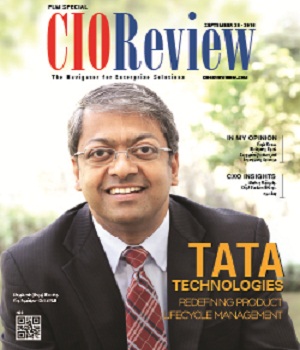
Rethink for an Effective Product Development Approach
Akshay Rajwade, Chief Product Officer, Nearbuy | Thursday, 20 October 2016, 10:35 IST
 In Product Lifecycle Management, there isn’t a one size-fits-all approach which works across industries and lifecycle stages. Each company needs to assess its industry and stage of growth to choose a product development approach that best meets it needs.
In Product Lifecycle Management, there isn’t a one size-fits-all approach which works across industries and lifecycle stages. Each company needs to assess its industry and stage of growth to choose a product development approach that best meets it needs.
I think the approach should be chosen based on your industry and current stage of growth. You should continue to adapt/change your approach as your company’s needs evolve.
Core tenets of the approach to product development:
1. Goal-oriented and hypothesis driven - A company should seek to drive clarity around product initiatives and their intended results. Clarity around the goals of a product initiative (problems you want to solve, hypothesis you want to test) helps you stay focused, guides decisions along the path of development and helps you set-up mechanisms to assess the performance of
the initiative.
2. Customer-centered - A team should focus on ideas that create tangible value for the end customer and actively seek and incorporate customer inputs throughout the product development process.
3. Technology-driven - If you are a technology company, then you should always look to technology-driven approaches to solve problems.
4. Focused on the last mile execution - Place high value on following through the last mile of execution to achieve maximum impact or learning - not everything needs to move the needle but everything needs to advance your understanding of your customers and business.
5. Speed - Move as fast as you can and organize your teams, processes and projects to achieve maximum speed, while keeping the focus on delivering real value.
Feel free to de-prioritize or limit your investment when ideas don’t meet these tenets.
A typical product initiative involves most of the following stages
1. Ideation – A broad concept that points to a problem or an opportunity
2. Problem Definition – A clear and validated description of the problem you want to solve
3. Solutioning - Design of the technology and the pathway to make the technology accessible to the end customer
4. Development - Implementation of the solution
5. Testing - Validation of the solution in terms of functionality, usability and desirability
6. Release & Growth - Roll-out of the solution to the end customer, and any refinements to maximize impact
While a typical product initiative involves the stages described above, the execution through these stages is neither strictly linear nor rigid.
Never-ending Formulation of Ideas
The ideation phase is usually a continuous phase, without a start or an end time associated with it. It is a constantly running stream of ideas, opportunities and problems to which everyone – employees across the organization as well as end customers contribute.
The technology team, which consists of product managers, designers, and engineers draws from this pool of ideas but also adds ideas of their own, based on insights from data and engagement with the end customers. Product Managers then take these ideas through a problem definition stage wherein they transform a concept into a product definition, validate the problem with customers and prioritize it based on its potential impact.
Transformation of Concepts into a Solution
The technology team is organized into smaller units consisting of a product manager, a designer, an engineering manager and engineers. Each unit has a domain of focus and responsibility. This self contained unit collaboratively designs a solution for a given problem and prepares execution plans. Product Managers validate the solution with actual customers to gather feedback and assess usefulness.
The engineering team works through the development plan, checking in with product managers regarding any changes to schedule or definition. The entire team comes together in the last two stages of the development - testing and release/growth. We test the functional product with internal users as well as external users. One should prepare a list of bugs and issues and clear out top priority issues that hamper usability or functionality.
Typically, you should release the feature to a small percentage of end customers, observe impact on key metrics, make changes as needed and roll it out to 100 percent audience. Post a full release, then continue to observe the metrics, gather feedback and make changes to ensure that the initiative is driving maximum impact and learning.
At any given time, the technology team typically works on several product initiatives, each of which can beat different stage of the development lifecycle. Overall, look further out up to a quarter or two and plan monthly releases that create value for your customers and impact for the business.
CIO Viewpoint
End to End Supply Chain Planning is the Need of...
By Abel Correa, CIO , Arvind Lifestyle Brands
Managing Insurance Portfolio through a Smartphone
By Mehmood Mansoori, Member of Executive Management - IT Innovation & CEM, HDFC ERGO General Insurance Company
Optimize routes with Central level integration
By Tarun Anand, GM - IT, Mother Dairy Fruit & Vegetable
CXO Insights
The Monumental Shift in Traditional PLM Centric...
By Dr. Chandan Chowdhury, Managing Director, Dassault Systemes India
Benchmarking Report Administering organizations...
By Nagi Kasinadhuni, GM, Communications, APAC, Dimensions Data India
Embracing Cloud-Communications for a...







